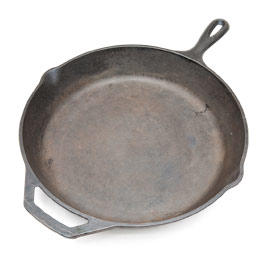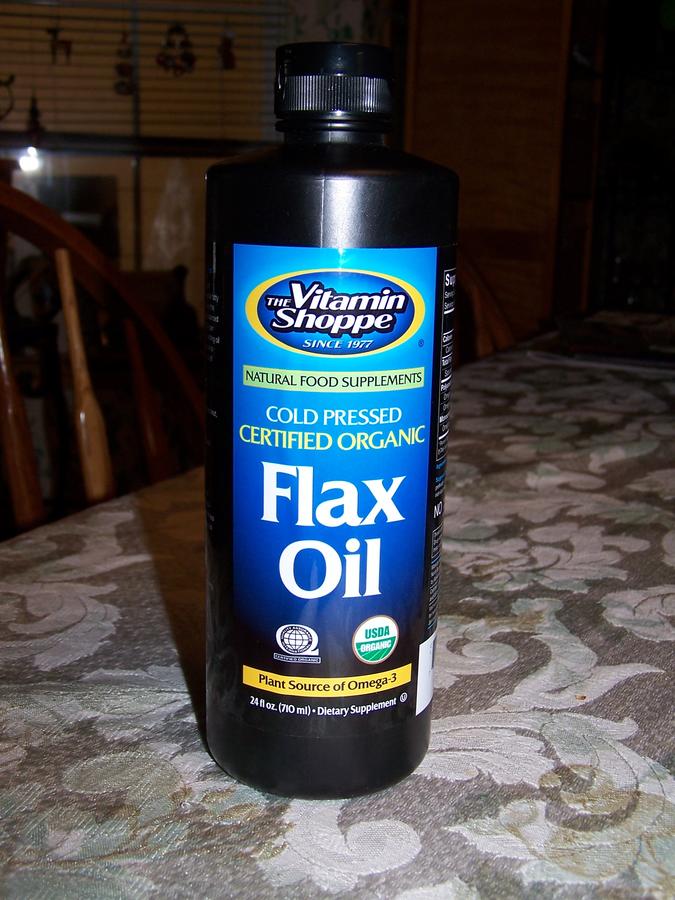Since there has been several threads where the use of flaxseed oil was described as the best way to season cast iron, I thought I would pass on this confirmation I ran across on the web today.
In 2011 Cook's Illustrated did one of their lab tests to see if flaxseed oil was in fact the way to go. The answer, yes! Hands down it was the clear winner.
Note: Use "food grade" flaxseed oil which can be obtained from a health food store. DO NOT use linseed oil which although made from a flaxseed oil base is not the same and is not food safe.
[h1]The Ultimate Way to Season Cast Iron[/h1]
http://www.cooksillustrated.com/how...d=26897&frtk=u3VJqn8v17q3E4m0demcX4pjog35T4sL
Published January 1, 2011. From Cook's Illustrated.
We'd seasoned our cast iron the same way for years. But when we heard about a new method that creates a slick surface so indestructible that touch-ups are almost never necessary, we were intrigued.
For years we’ve seasoned cast-iron cookware in the test kitchen by placing it over medium heat and wiping out the pan with coats of vegetable oil until its surface turns dark and shiny. When a pan starts to look patchy, we simply repeat the process. But when we heard about a new method that creates a slick surface so indestructible that touch-ups are almost never necessary, we were intrigued. Developed by blogger Sheryl Canter, the approach calls for treating the pan with multiple coats of flaxseed oil between hour-long stints in the oven.
We carried out Canter’s approach on new, unseasoned cast-iron skillets and compared them with pans treated with vegetable oil—and the results amazed us. The flaxseed oil so effectively bonded to the skillets, forming a sheer, stick-resistant veneer, that even a run through our commercial dishwasher with a squirt of degreaser left them totally unscathed. But the vegetable oil-treated skillets showed rusty spots and patchiness when they emerged from the dishwasher, requiring reseasoning before use.
Why did the new treatment work so well? Flaxseed oil is the food-grade equivalent of linseed oil, used by artists to give their paintings a hard, polished finish, and it boasts six times the amount of omega-3 fatty acids as vegetable oil. Over prolonged exposure to high heat, these fatty acids combine to form a strong, solid matrix that polymerizes to the pan’s surface.
Although lengthy, seasoning with flaxseed oil is a mainly hands-off undertaking. We highly recommend the treatment:
1. Warm an unseasoned pan (either new or stripped of seasoning*) for 15 minutes in a 200-degree oven to open its pores.
2. Remove the pan from the oven. Place 1 tablespoon flaxseed oil in the pan and, using tongs, rub the oil into the surface with paper towels. With fresh paper towels, thoroughly wipe out the pan to remove excess oil.
3. Place the oiled pan upside down in a cold oven, then set the oven to its maximum baking temperature. Once the oven reaches its maximum temperature, heat the pan for one hour. Turn off the oven; cool the pan in the oven for at least two hours.
4. Repeat the process five more times, or until the pan develops a dark, semi-matte surface.
*To strip a cast-iron pan of seasoning, spray it with oven cleaner, wait 30 minutes, wash with soapy water, and thoroughly wipe with paper towels.
Even after a run in the dishwasher, the pan seasoned with flaxseed oil held on to its perfect seasoning. The pan seasoned with vegetable oil did not.
Here are the photos
Above - Photo of flaxseed oil seasoned pan after a run in the dishwasher - still seasoned
Above - Photo of vegetable oil seasoned pan after a run in the dishwasher - no longer seasoned
In 2011 Cook's Illustrated did one of their lab tests to see if flaxseed oil was in fact the way to go. The answer, yes! Hands down it was the clear winner.
Note: Use "food grade" flaxseed oil which can be obtained from a health food store. DO NOT use linseed oil which although made from a flaxseed oil base is not the same and is not food safe.
[h1]The Ultimate Way to Season Cast Iron[/h1]
http://www.cooksillustrated.com/how...d=26897&frtk=u3VJqn8v17q3E4m0demcX4pjog35T4sL
Published January 1, 2011. From Cook's Illustrated.
We'd seasoned our cast iron the same way for years. But when we heard about a new method that creates a slick surface so indestructible that touch-ups are almost never necessary, we were intrigued.
For years we’ve seasoned cast-iron cookware in the test kitchen by placing it over medium heat and wiping out the pan with coats of vegetable oil until its surface turns dark and shiny. When a pan starts to look patchy, we simply repeat the process. But when we heard about a new method that creates a slick surface so indestructible that touch-ups are almost never necessary, we were intrigued. Developed by blogger Sheryl Canter, the approach calls for treating the pan with multiple coats of flaxseed oil between hour-long stints in the oven.
We carried out Canter’s approach on new, unseasoned cast-iron skillets and compared them with pans treated with vegetable oil—and the results amazed us. The flaxseed oil so effectively bonded to the skillets, forming a sheer, stick-resistant veneer, that even a run through our commercial dishwasher with a squirt of degreaser left them totally unscathed. But the vegetable oil-treated skillets showed rusty spots and patchiness when they emerged from the dishwasher, requiring reseasoning before use.
Why did the new treatment work so well? Flaxseed oil is the food-grade equivalent of linseed oil, used by artists to give their paintings a hard, polished finish, and it boasts six times the amount of omega-3 fatty acids as vegetable oil. Over prolonged exposure to high heat, these fatty acids combine to form a strong, solid matrix that polymerizes to the pan’s surface.
Although lengthy, seasoning with flaxseed oil is a mainly hands-off undertaking. We highly recommend the treatment:
1. Warm an unseasoned pan (either new or stripped of seasoning*) for 15 minutes in a 200-degree oven to open its pores.
2. Remove the pan from the oven. Place 1 tablespoon flaxseed oil in the pan and, using tongs, rub the oil into the surface with paper towels. With fresh paper towels, thoroughly wipe out the pan to remove excess oil.
3. Place the oiled pan upside down in a cold oven, then set the oven to its maximum baking temperature. Once the oven reaches its maximum temperature, heat the pan for one hour. Turn off the oven; cool the pan in the oven for at least two hours.
4. Repeat the process five more times, or until the pan develops a dark, semi-matte surface.
*To strip a cast-iron pan of seasoning, spray it with oven cleaner, wait 30 minutes, wash with soapy water, and thoroughly wipe with paper towels.
Even after a run in the dishwasher, the pan seasoned with flaxseed oil held on to its perfect seasoning. The pan seasoned with vegetable oil did not.
Here are the photos
Above - Photo of flaxseed oil seasoned pan after a run in the dishwasher - still seasoned
Above - Photo of vegetable oil seasoned pan after a run in the dishwasher - no longer seasoned









